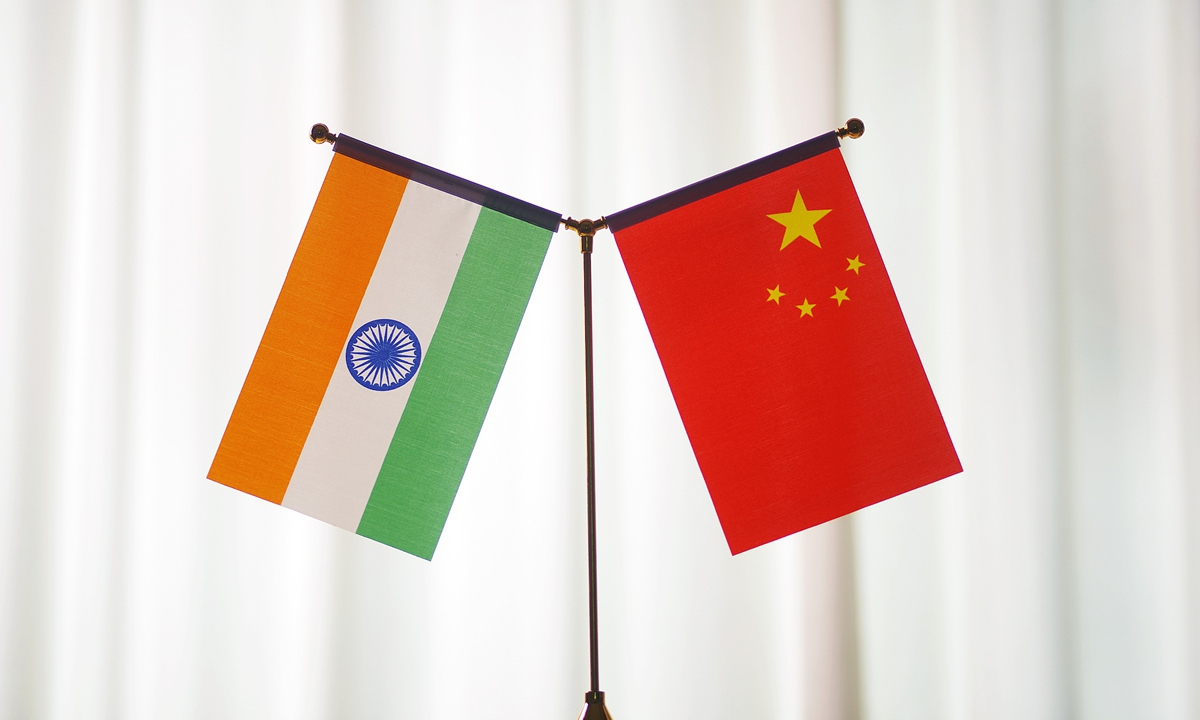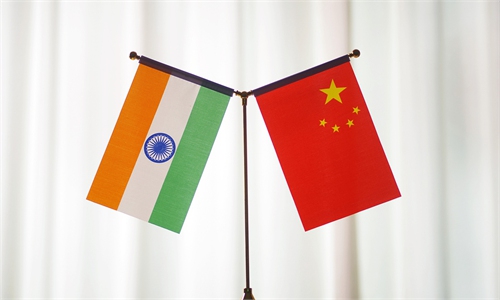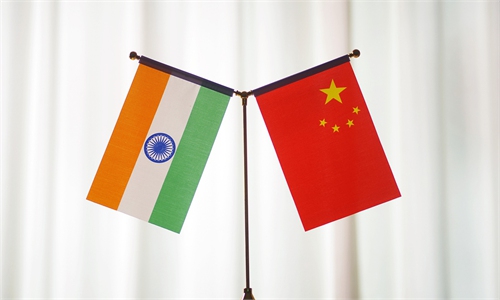
China India Photo:CFP
India recorded a strong double-digit economic growth in the second quarter this year, becoming the fastest growing major economy among G20 countries. This item of good news has been warmly received among Indian people and across Chinese society too. It is hoped that India could continue to climb the ladder of wealth by working and collaborating closely with China, the largest economy in Asia, to greet the true advent of "Asian Century."Thanks to the joint efforts of the two countries' leadership and respective militaries, prior tensions on China-India border have largely eased, and the two populous nations' political ties are now recovering, which lays a solid foundation for the two economies' cooperation over coming months and years.
The two countries' top and veteran diplomats, Foreign Minister Wang Yi and Indian External Affairs Minister Subrahmanyam Jaishankar, have recently held two productive meetings. They reaffirmed the consensus that China and India do not pose a threat to each other, and it is their common interest to seek higher levels of understanding, and enhance trade and economic cooperation so as to offer each other more mutual development opportunities.
It is of great significance that their trade has kept on growing despite global economic gloom and geopolitical volatility. Bilateral trade, which grew 16 percent in the first eight months this year, is well expected to top $100 billion in 2022. People-to-people exchanges between the two have also increased lately.
It is important for both India and China to focus on improving their all-around relationship, and prevent a third party to plant a wedge between them. As geographic neighbors, the two countries and two peoples have every reason to be on good terms, and forge friendly political ties, and constantly build up a mutually-reinforcing economic partnership.
For a long time, the US government has been trying to lure India into joining its anti-China bloc, simply because American politicians cannot tolerate China's meteoric economic rise on the global stage, which will cut into Washington's ability to project its unrivalled power and hegemony. It is hoped that New Delhi could remain sober-minded, and won't be easily hoodwinked or manipulated by Washington.
Recently, India walked out of the trade talks of the US-created "Indo-Pacific Economic Framework for Prosperity" as the Biden administration had no intention to open its market to the IPEF members.
As a matter of fact, China is now home to the world's most complete and complicated manufacturing system, despite the US government's unrelenting assault on China's top technology companies in the past several years. If New Delhi truly wants to upgrade its infrastructure and its manufacturing level, the most expedient and efficient way is eliminating its administrative restrictions on Chinese companies and starting to cooperate with them.
And the two countries ought to strengthen cooperation on a range of global affairs, such as opposing the US and the West's sanctions against Moscow, calling on Russia and Ukraine to stop their conflict and settle their differences through peaceful negotiations, collaborating to ensure Asia's supply chain security, energy and food supply safety, and fighting climate change together.
As China-India closer cooperation is to Washington's disliking, American politicians have been desperately trying to poison bilateral relations. Washington has always aspired to prompt New Delhi to jump on its anti-China bandwagon. Washington has triggered a military conflict in Europe, and recently, it has sought to fire up tensions across the Taiwan Straits by sending leading US legislators to the Taiwan island. In a sense, Washington wanted to create more troubles around the globe.
Economically, the US Federal Reserve has made use of its dollar's global reserve currency position to crack down upon other currencies' value through its erratic policy of monetary easing and then tightening, creating financial tsunamis to hit other economies while the US could dispense its system risks in the course.
For a long time, China and India have insisted that border disputes be resolved through bilateral negotiations, free of any third-party intervention. The two countries know perfectly well that it is not in the interest of either country for a third party to intervene in their talks.
Now, the two neighbors have achieved an orderly military disengagement through effective diplomatic and military dialogue. And, after holding three rounds of commander-level talks in 2022, the two nations have agreed to maintain military and diplomatic communication and their border disagreements through consultation and dialogue.
It is always crucial to keep clear-minded, that China-India relations, which have a long history, cannot be made a victim of Washington' geopolitical games. Since the normalization of their relations in 1988, Beijing and New Delhi have continued to expand and deepen their engagements.
And since both sides attach the greatest value to independent policy-making, which has become dearer in the current global environment, they should be strategically focused on longer-term prospects, work together to prevent the US from provoking a new Cold War, jointly maintain regional peace and stability, and promote economic development in Asia and beyond. And India, for its own benefit, should foster China-India ties with more care, and always keep a distance from Washington's strategic and geopolitical games.
The healthy development of China-India relations will not only help the two sides to achieve their respective goals of sustainable economic growth, improving living standards, and achieving national rejuvenation, but also inject positive energy into and stabilize the current tumultuous world.
The author is an editor with the Global Times. bizopinion@globaltimes.com.cn



